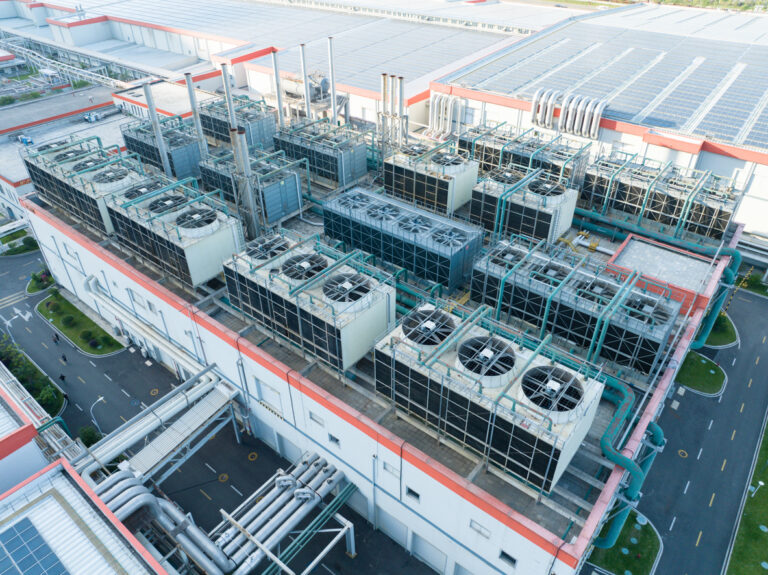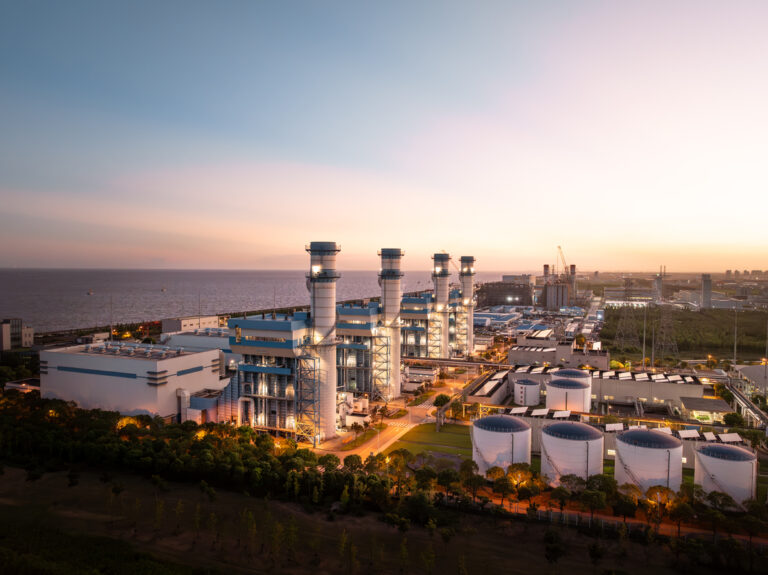What is an HVAC System?
HVAC or “Heating, Ventilation, and Air Conditioning” systems compromise a building’s ventilation and heating system. These systems can differ heavily from building to building and can differ based on a building’s usage. A hotel for instance might have a more demanding air conditioning system due to the number of rooms it has, while a warehouse might have something completely different for the storage of temperature sensitive materials. Regardless, HVAC systems can account for a large amount of a building’s energy consumption. Sometimes even as high as 40% or more of a building’s total energy usage. There are a variety of components that make up commercial and industrial building HVAC systems.
DX Unit HVAC
“DX units” aka Direct Expansion units come in a few forms including split system units, which have the heating and cooling equipment split across different parts of a building. In a split system HVAC parts, like the evaporator system, could be located inside while the condenser system might be located outside. Another major DX unit type are packaged units, which have all the various HVAC parts “packaged” in one large component.
RTU HVAC
An RTU HVAC or “rooftop unit,” which are installed on a building’s rooftop and provide central air are a very common example of a packed unit. Aristair notes that RTUs “…are commonly used for large, open spaces such as warehouses, large stores and shopping centers. Single-story buildings are best suited since the conditioned air doesn’t have to travel very far to the space. However, RTUs can be used in multi-story buildings as long they don’t exceed 10 stories, and there is accessible space on the roof and ductwork in place.”
Central HVAC
A “Central Plant” which utilizes boilers and chillers, which are used to heat and cool a building through the heating a cooling of liquid, are another type of HVAC system. NY-Engineers, in their guide to boilers/chillers says, “This system configuration uses fans in each individual fan-coil and in the cooling tower, and pumps in both water circuits. If all these components are equipped with variable speed drives, chilled water air conditioning can offer remarkable energy efficiency. The heating mode also uses hydronic piping and fan coils, with the difference that a boiler is used instead of a chiller. Hydronic piping and fan-coils are used to distribute heat indoors.”
Additionally, “HVAC systems that deploy a cooling tower, chiller and boiler can be classified in two main categories: Two-pipe systems use the same hydronic piping circuit for heating and cooling, which means the chiller and boiler can’t operate simultaneously. In other words, the entire building must be either heating mode or cooling mode. Four-pipe systems have separate hydronic piping for the chiller and boiler, allowing both units to operate simultaneously. If some building areas need cooling while others need heating, this system configuration enables it.”
But why upgrade your HVAC system? Many facilities operate their HVAC systems well beyond their useful life and in many cases use inefficient and outdated equipment which in the long run costs them more on each utility bill as well as for ongoing maintenance. Significant cost and energy savings can be realized from upgrading to newer systems, and if your building has made other upgrades, such as lighting, you might also find that your system is oversized (i.e. has the wrong tonnage (air conditioning) and BTU (heating) sizes for the building’s new needs) and you could upgrade to a smaller and more efficient system. In fact according to Energy.gov if you have an older HVAC system then it is likely that it is oversized as it was rare for contractors in the past to install based on building load, leading to oversized, inefficient, costly, and wasteful systems. Redaptive’s HVAC upgrade program and retrofitting services can help.
Also, make sure to take inventory of the HVAC systems in your portfolio that use R-22, as the R-22 ban, went into effect January, 2020 and could make many systems far more costly to retrofit or replace in the future.



